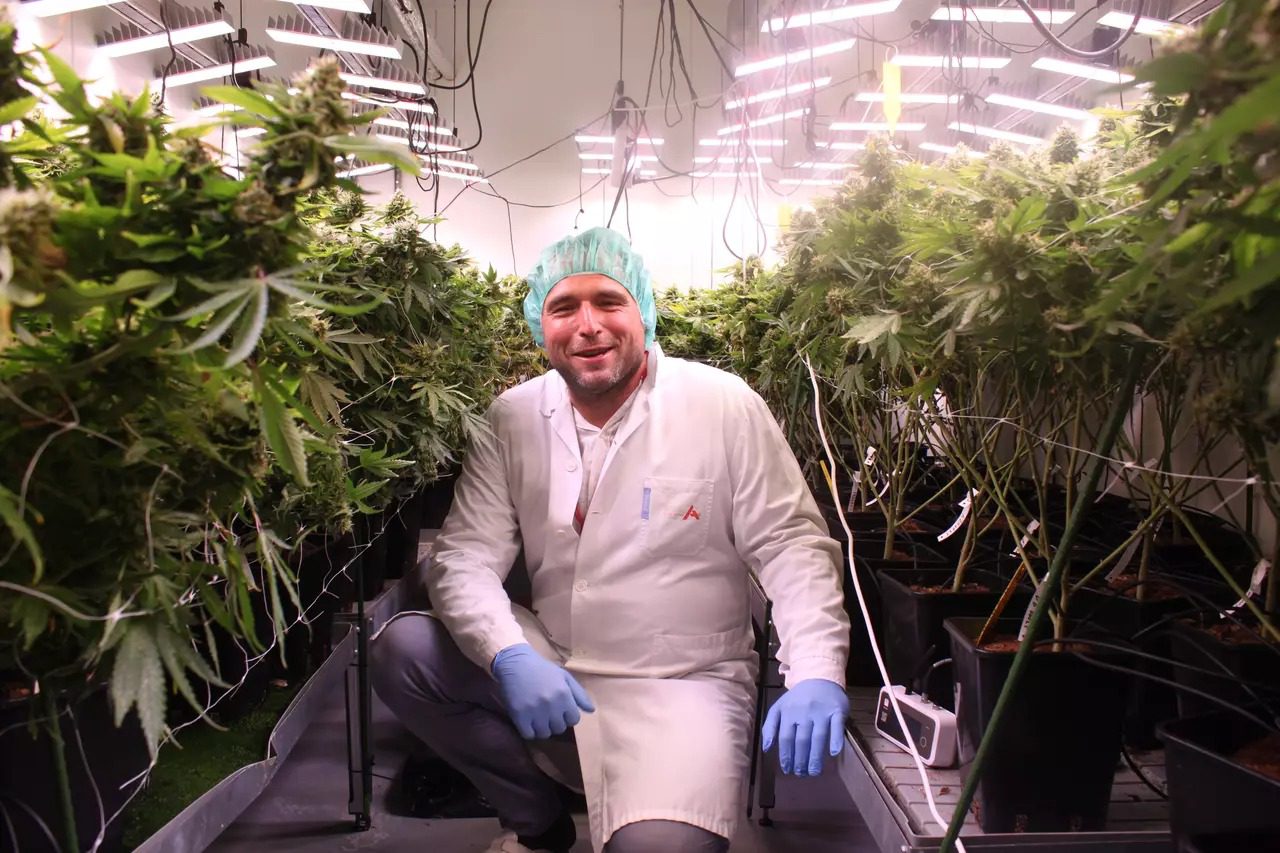In a groundbreaking achievement, the Czech Republic has completed its first harvest of medicinal cannabis. The sole cultivation facility in the country has produced approximately seven kilograms of material from around 200 plants. After drying and obtaining the necessary distribution permits, this harvest could reach patients in time for Christmas. The primary benefit of medicinal cannabis is its ability to alleviate pain, making it a crucial resource for patients. The cultivation facility is operated by the Faculty Hospital in Brno, located near St. Anne’s Church, although the facility’s exact location remains undisclosed.
This milestone marks the culmination of a decade-long struggle by healthcare professionals to utilize cannabis for patient treatment in the country. The final step in this journey involves obtaining permission from the State Institute for Drug Control (SÚKL) to distribute the newly cultivated cannabis to patients. “We can cultivate cannabis in the Czech Republic, ensuring the highest quality and producing our own medicine. It took time, but it is incredible progress,” said Václav Trojan, the head of the cultivation facility, in an interview with Právo.
Patients in the Czech Republic currently utilize 150 kilograms of cannabis annually for pain treatment related to injuries, rheumatism, degenerative spinal conditions, and cancer. The current supply is imported from South America and Canada, a dependency that may soon end as healthcare professionals can cultivate cannabis domestically. The Faculty Hospital in Brno, specifically St. Anne’s Church, has emerged as a pioneer in cannabis-based treatments. While the production of marijuana from cannabis plants initially faced criticism for utilizing state funds to manufacture drugs, legislation was subsequently passed in 2013 to permit cannabis treatment in the Czech Republic.
In 2015, Dr. Radovan Hřib, a physician at the Hospital’s Pain Treatment Center, provided cannabis treatment to the first patient in the country. The hospital initially offered a mixture, but in April 2018, patients were allowed to inhale the vaporized extracts of cannabis. While inhalation was unsuitable for all patients, the hospital responded to their needs by developing capsules. “Some patients experienced coughing and difficulty breathing. It was challenging for non-smokers. That’s why we created our capsules. Essentially, the capsule contains a powder that is swallowed with water, and that’s it,” added Trojan. Two-thirds of patients prefer capsules as their preferred method of cannabis consumption.
The quality of confiscated cannabis used in treatment has long been debated. Cannabis obtained from illegal cultivation facilities is produced with the primary objective of maximizing speed. These facilities often use excessive amounts of fertilizers, pesticides, and other substances that raise concerns among experts. As a result, the final product is not pure enough for physicians to administer to patients with a clear conscience.
The Faculty Hospital’s cultivation facility resembles these illegal operations in some ways. However, it operates under strict, accepted, and adhered to regulations. The facility diligently cares for the plants and safeguards their quality to ensure that cannabis relieves patients. The hospital’s cultivation facility aims to achieve four harvests of cannabis annually, yielding a total of 25 kilograms of dried material. Once this goal is achieved, St. Anne’s Hospital will become entirely self-sufficient in terms of cannabis consumption. However, Trojan emphasizes that the ultimate aim is for the Czech Republic to be autonomous. Expanding the hospital’s cultivation facility is one potential avenue toward this goal.
This remarkable achievement in the Czech Republic’s medical cannabis sector represents a significant step forward in providing effective treatment options for patients. As the country continues cultivating its medicinal cannabis, it ensures a reliable supply of high-quality medicine, paving the way for further advancements in healthcare and promoting the well-being of patients in need.





